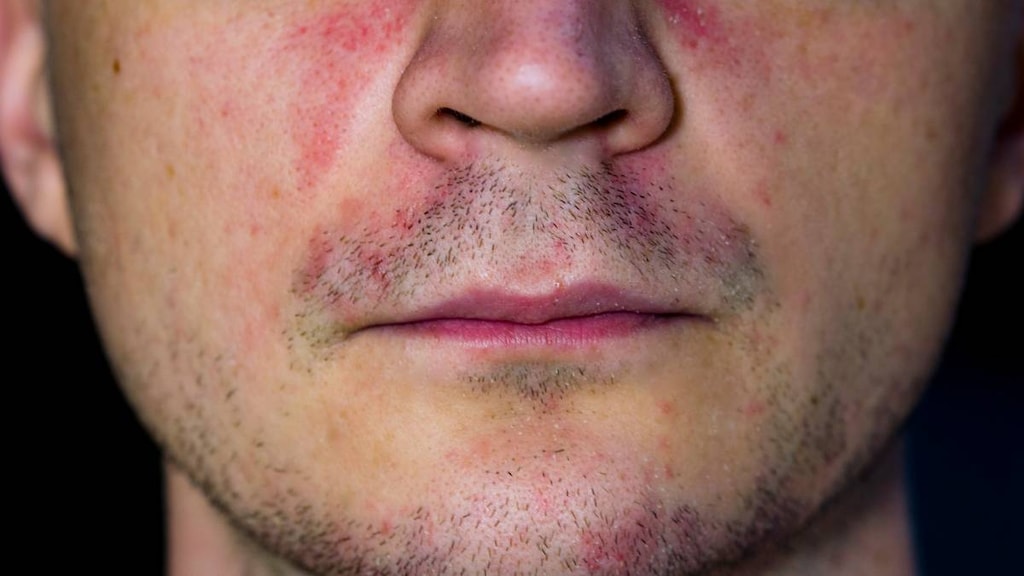Dosage Forms
Excipient information presented when available (limited, particularly for generics); consult specific product labeling. [DSC] = Discontinued product
Cream, External:
MetroCream: 0.75% (45 g) [contains benzyl alcohol]
Noritate: 1% (60 g) [contains methylparaben, propylparaben, trolamine (triethanolamine)]
Rosadan: 0.75% (45 g) [contains benzyl alcohol]
Generic: 0.75% (45 g)
Gel, External:
Metrogel: 1% (55 g, 60 g) [contains methylparaben, propylparaben]
Rosadan: 0.75% (45 g) [contains edetate disodium, methylparaben, propylene glycol, propylparaben]
Generic: 0.75% (45 g); 1% (55 g, 60 g)
Gel, Vaginal:
MetroGel-Vaginal: 0.75% (70 g [DSC]) [contains edetate disodium, methylparaben, propylene glycol, propylparaben]
Nuvessa: 1.3% (5 g [DSC]) [contains benzyl alcohol, methylparaben, polyethylene glycol, propylene glycol, propylparaben]
Nuvessa: 1.3% (5 g) [contains benzyl alcohol, methylparaben, propylene glycol, propylparaben]
Vandazole: 0.75% (70 g) [contains methylparaben, propylparaben]
Generic: 0.75% (70 g)
Kit, External:
Rosadan: 0.75% [contains benzyl alcohol]
Rosadan: 0.75% [contains edetate disodium, methylparaben, propylene glycol, propylparaben]
Lotion, External:
MetroLotion: 0.75% (59 mL) [contains benzyl alcohol]
Generic: 0.75% (59 mL)
Pharmacology
Mechanism of Action
After diffusing into the organism, interacts with DNA to cause a loss of helical DNA structure and strand breakage resulting in inhibition of protein synthesis and cell death in susceptible organisms
Pharmacokinetics/Pharmacodynamics
Absorption
Topical: Concentrations achieved systemically after application of the 1 g topical gel and cream are <1% of those obtained after a 250 mg oral dose
Vaginal gel: Concentrations achieved systemically after application of 5 g vaginal gel (containing either 37.5 mg or 65 mg metronidazole) are ~2 % of those obtained after a 500 mg oral dose
Use: Labeled Indications
Bacterial vaginosis:
Vaginal gel 0.75%: Treatment of bacterial vaginosis
Vaginal gel 1.3%: Treatment of bacterial vaginosis in females ≥12 years of age
Rosacea: Topical: Treatment of inflammatory lesions and erythema of rosacea
Trichomoniasis: Flagyl cream [Canadian product]: Treatment of trichomoniasis in females
Contraindications
Hypersensitivity to metronidazole, parabens, or other ingredients of the formulation or other nitroimidazole derivatives; use of alcohol or propylene glycol during therapy and for up to 24 hours after therapy discontinuation (vaginal gel only); use of disulfiram within the past 2 weeks (vaginal gel only).
Flagyl cream [Canadian product]: Additional contraindications: Active neurological disorders; history of blood dyscrasia, hypothyroidism or hypoadrenalism.
Nidagel [Canadian product]: Additional contraindications: Use during the first trimester of pregnancy.
Dosage and Administration
Dosing: Adult
Bacterial vaginosis: Intravaginal:
0.75% (Vandazole): One applicatorful (~37.5 mg metronidazole) intravaginally once daily for 5 days.
0.75% (MetroGel-vaginal, other products): One applicatorful (~37.5 mg metronidazole) intravaginally once or twice daily for 5 days.
1.3% (Nuvessa): One applicatorful (~65 mg metronidazole) intravaginally as a single dose.
Rosacea: Topical:
0.75%: Apply and rub a thin film twice daily, morning and evening, to entire affected areas after washing.
1%: Apply thin film to affected area once daily.
Trichomoniasis: Intravaginal: 10% (Flagyl Cream [Canadian product]): Insert one applicatorful (equal to metronidazole 500 mg) intravaginally once or twice daily for 10 or 20 consecutive days (even during menses).
Dosing: Geriatric
Refer to adult dosing.
Dosing: Pediatric
Bacterial vaginosis:
Vaginal gel 0.75%: Adolescents: Intravaginal: One applicatorful (~37.5 mg metronidazole) intravaginally once daily at bedtime for 5 days
Vaginal gel 1.3%: Children ≥12 years and Adolescents: Intravaginal: One applicatorful (~65 mg metronidazole) intravaginally once at bedtime as a single dose
Periorificial dermatitis: Limited data available: Infants ≥6 months, Children, and Adolescents: Topical: 0.75% gel: Apply thin film once or twice daily (Manders 1992; Miller 1994; Nguyen 2006)
Administration
Topical: No disulfiram-like reactions have been reported after topical application, although metronidazole can be detected in the blood. Apply to clean, dry skin. Cosmetics may be used after application (wait at least 5 minutes after using lotion).
Intravaginal: For vaginal use only. Applicator may be inserted in any comfortable position. Hold the applicator by the barrel, gently insert into the vagina as far as possible without causing discomfort. Press the plunger until it stops and withdraw the applicator. Patients should not use intravaginal products (eg, tampons, douches) or engage in vaginal intercourse for the duration of treatment. Discard applicator after use.
0.75%: Administer once in morning and evening if using twice daily; if daily, use at bedtime.
1.3%: Administer as a single dose at bedtime.
10% (Flagyl cream [Canadian product]): Administer once or twice daily; do not use applicator after the 7th month of pregnancy.
Storage
Topical cream, gel, lotion: Store at 20°C to 25°C (68°F to 77°F).
Vaginal gel: Store at 15°C to 30°C (59°F to 86°F); do not refrigerate or freeze. Avoid exposure to extreme heat.
Drug Interactions
Alcohol (Ethyl): MetroNIDAZOLE (Topical) may enhance the adverse/toxic effect of Alcohol (Ethyl). A disulfiram-like reaction may occur. Management: Warn patients and monitor for signs and symptoms of a disulfiram-like reaction if patients consume alcohol while using topical metronidazole. Some manufacturers of vaginal metronidazole products list alcohol use within 24 to 72 hours as a contraindication Consider therapy modification
Disulfiram: MetroNIDAZOLE (Topical) may enhance the adverse/toxic effect of Disulfiram. In particular, the risk for CNS toxicities such as psychosis may be increased. Management: Warn patients and monitor for the development of serious CNS toxicity if topical metronidazole is used in a patient taking disulfiram. Some manufacturers of vaginal metronidazole products list disulfiram use within 2 weeks as a contraindication. Consider therapy modification
Lopinavir: MetroNIDAZOLE (Topical) may enhance the adverse/toxic effect of Lopinavir. Specifically, the use of topical metronidazole with lopinavir/ritonavir solution (which contains 42% alcohol) may result in a disulfiram-like reaction. Monitor therapy
Tipranavir: MetroNIDAZOLE (Topical) may enhance the adverse/toxic effect of Tipranavir. Monitor therapy
Adverse Reactions
Topical:
1% to 10:
Cardiovascular: Hypertension (1%)
Central nervous system: Headache (2%)
Dermatologic: Erythema (≤6%), contact dermatitis (1% to 3%), burning sensation of skin (<3%), exacerbation of acne rosacea (<3%), pruritus (<3%), skin irritation (<3%), stinging of the skin (<3%), xeroderma (≤2%)
Genitourinary: Urinary tract infection (1%)
Hypersensitivity: Local hypersensitivity reaction (3%)
Infection: Influenza (1%)
Respiratory: Upper respiratory tract infection (3%)
Frequent not defined:
Central nervous system: Metallic taste, numbness of extremities, tingling of extremities
Gastrointestinal: Nausea
Ophthalmic: Lacrimation
<1%, postmarketing, and/or case reports: Acne vulgaris, conjunctivitis, eye irritation, peripheral neuropathy, xerostomia
Vaginal:
>10%:
Genitourinary: Vaginal discharge (12%)
Infection: Fungal infection (12%)
1% to 10%:
Central nervous system: Headache (2% to 7%), dizziness (2%)
Dermatologic: Pruritus (6%), skin rash (1%)
Gastrointestinal: Gastrointestinal distress (7%), abdominal pain (5%), nausea (≤4%), vomiting (≤4%), dysgeusia (2%), abdominal cramps (1%), decreased appetite (1%), diarrhea (1%)
Genitourinary: Vulvovaginal candidiasis (6% to 10%), cervical candidiasis (≤10%), vaginitis (≤10%), vulvovaginal irritation (9%), pelvic pain (3%), dysmenorrhea (1% to 3%), vulvovaginal pruritus (2%), abnormal uterine bleeding (1%), mastalgia (1%)
Hematologic & oncologic: Abnormal white blood cell differential (2%)
Infection: Infection (1%)
Neuromuscular & skeletal: Muscle cramps (1%)
Respiratory: Pharyngitis (2%)
<1%, postmarketing, and/or case reports: Acne vulgaris, anorexia, asthma, back pain, bloating, breast hypertrophy, constipation, dark urine, depression, diaphoresis, dyspepsia, dysuria, edema (labial), fatigue, flatulence, flu-like symptoms, gingivitis, heavy menstrual bleeding, hypersensitivity reaction, increased thirst, insomnia, lactation, leukorrhea, mucous membrane disease, pain, pyelonephritis, rhinitis, salpingitis, urinary frequency, urinary tract infection, urticaria, vomiting, xerostomia
Warnings/Precautions
Concerns related to adverse effects:
- Carcinogenic: Possibly carcinogenic based on animal data. Unnecessary use should be avoided.
- CNS effects: Aseptic meningitis, encephalopathy, seizures, and neuropathies (peripheral and optic) have been reported with systemic metronidazole, especially with increased doses and chronic treatment; peripheral neuropathy has also been reported with topical products; monitor and consider discontinuation of therapy if signs/symptoms occur. Use with caution in patients with CNS diseases. Discontinue immediately if abnormal neurologic signs develop.
- Eye irritation: May cause tearing of the eye; avoid contact with the eyes. In the event of accidental contact, wash out immediately.
- Hepatic impairment: Use with caution in patients with severe liver impairment due to potential accumulation.
- Superinfection: Prolonged use may result in fungal or bacterial superinfection. Approximately 6% to 10% of women treated with the vaginal gel developed Candida vaginitis during or immediately after treatment.
Disease-related concerns:
- Blood dyscrasias: Use with caution in patients with or history of blood dyscrasias.
Dosage form related concerns:
- Benzyl alcohol and derivatives: Some dosage forms may contain benzyl alcohol; large amounts of benzyl alcohol (≥99 mg/kg/day) have been associated with a potentially fatal toxicity (“gasping syndrome”) in neonates; the “gasping syndrome” consists of metabolic acidosis, respiratory distress, gasping respirations, CNS dysfunction (including convulsions, intracranial hemorrhage), hypotension, and cardiovascular collapse (AAP ["Inactive" 1997]; CDC 1982); some data suggests that benzoate displaces bilirubin from protein binding sites (Ahlfors 2001); avoid or use dosage forms containing benzyl alcohol with caution in neonates. See manufacturer’s labeling.
- Vaginal gel: Disulfiram-like reaction to ethanol has been reported with systemic metronidazole and may occur with the vaginal gel; consumption of alcoholic beverages during therapy with vaginal gel is contraindicated during and for up to 72 hours after therapy. Do not administer the vaginal gel to patients who have taken disulfiram within the past 2 weeks. Patients should avoid vaginal intercourse during treatment.
Pregnancy
Pregnancy Risk Factor
B
Pregnancy Considerations
Metronidazole crosses the placenta and rapidly distributes into the fetal circulation following oral administration.
The amount of metronidazole available systemically following topical application is less in comparison to oral doses. Although the vaginal products are not indicated for use in pregnant patients, bacterial vaginosis has been associated with adverse pregnancy outcomes; current guidelines recommended metronidazole for the treatment of symptomatic bacterial vaginosis in pregnancy (CDC [Workowski 2015]). When used for the treatment of inflammatory lesions and erythema of rosacea, topical antibiotics, including metronidazole, are considered compatible with pregnancy (Murase 2014).
Patient Education
What is this drug used for?
- It is used to treat rosacea.
- It is used to treat vaginal infections.
- It may be given to you for other reasons. Talk with the doctor.
Frequently reported side effects of this drug
- Abdominal pain
- Scaling
- Itching
- Stinging
- Burning
- Headache
- Dry skin
Other side effects of this drug: Talk with your doctor right away if you have any of these signs of:
- Burning or numbness feeling
- Severe application site irritation
- Vaginal discharge
- Signs of a significant reaction like wheezing; chest tightness; fever; itching; bad cough; blue skin color; seizures; or swelling of face, lips, tongue, or throat.
Note: This is not a comprehensive list of all side effects. Talk to your doctor if you have questions.
Consumer Information Use and Disclaimer: This information should not be used to decide whether or not to take this medicine or any other medicine. Only the healthcare provider has the knowledge and training to decide which medicines are right for a specific patient. This information does not endorse any medicine as safe, effective, or approved for treating any patient or health condition. This is only a brief summary of general information about this medicine. It does NOT include all information about the possible uses, directions, warnings, precautions, interactions, adverse effects, or risks that may apply to this medicine. This information is not specific medical advice and does not replace information you receive from the healthcare provider. You must talk with the healthcare provider for complete information about the risks and benefits of using this medicine.

